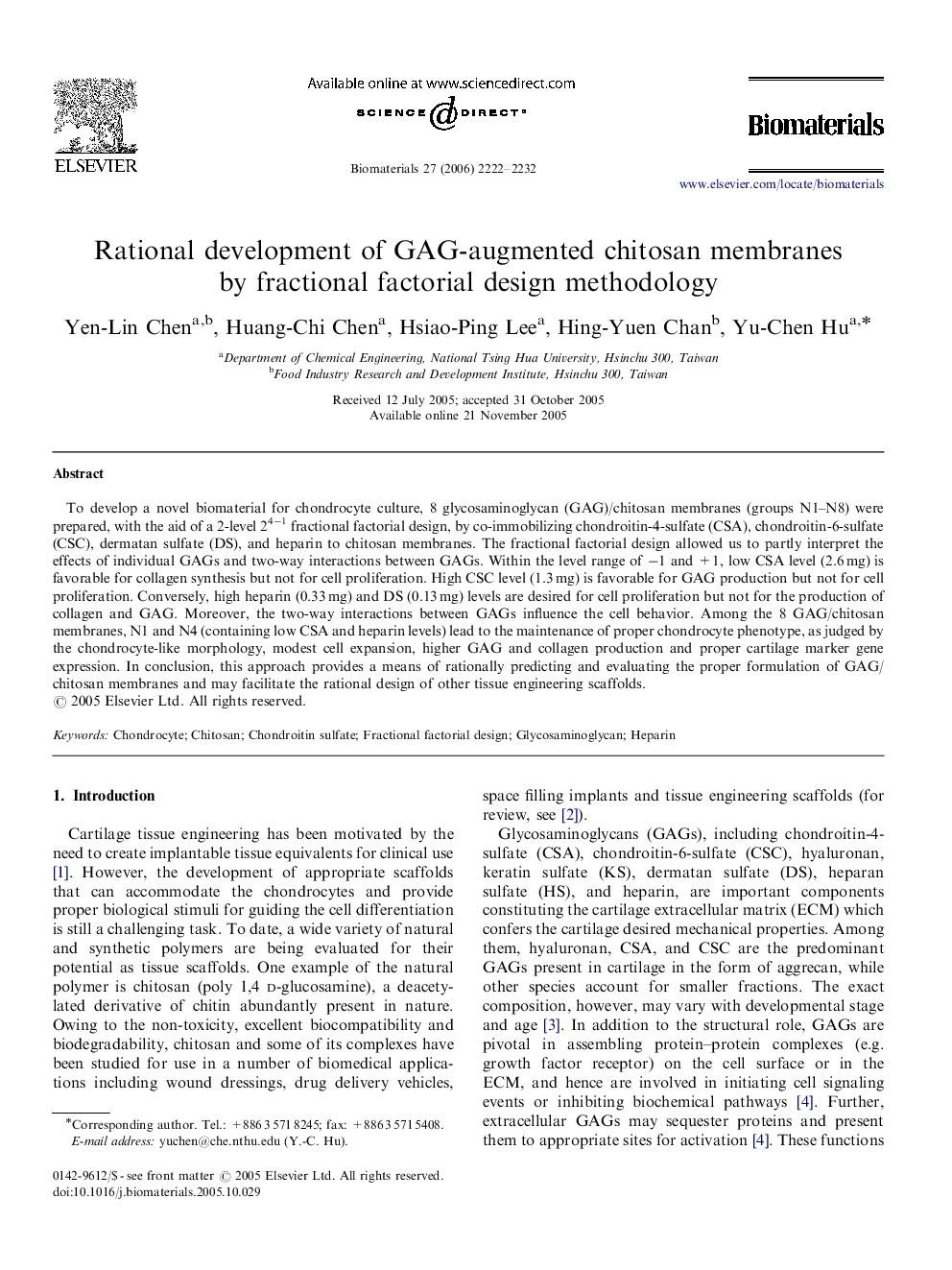| کد مقاله | کد نشریه | سال انتشار | مقاله انگلیسی | نسخه تمام متن |
|---|---|---|---|---|
| 11616 | 749 | 2006 | 11 صفحه PDF | دانلود رایگان |

To develop a novel biomaterial for chondrocyte culture, 8 glycosaminoglycan (GAG)/chitosan membranes (groups N1–N8) were prepared, with the aid of a 2-level 24−1 fractional factorial design, by co-immobilizing chondroitin-4-sulfate (CSA), chondroitin-6-sulfate (CSC), dermatan sulfate (DS), and heparin to chitosan membranes. The fractional factorial design allowed us to partly interpret the effects of individual GAGs and two-way interactions between GAGs. Within the level range of −1 and +1, low CSA level (2.6 mg) is favorable for collagen synthesis but not for cell proliferation. High CSC level (1.3 mg) is favorable for GAG production but not for cell proliferation. Conversely, high heparin (0.33 mg) and DS (0.13 mg) levels are desired for cell proliferation but not for the production of collagen and GAG. Moreover, the two-way interactions between GAGs influence the cell behavior. Among the 8 GAG/chitosan membranes, N1 and N4 (containing low CSA and heparin levels) lead to the maintenance of proper chondrocyte phenotype, as judged by the chondrocyte-like morphology, modest cell expansion, higher GAG and collagen production and proper cartilage marker gene expression. In conclusion, this approach provides a means of rationally predicting and evaluating the proper formulation of GAG/chitosan membranes and may facilitate the rational design of other tissue engineering scaffolds.
Journal: Biomaterials - Volume 27, Issue 10, April 2006, Pages 2222–2232